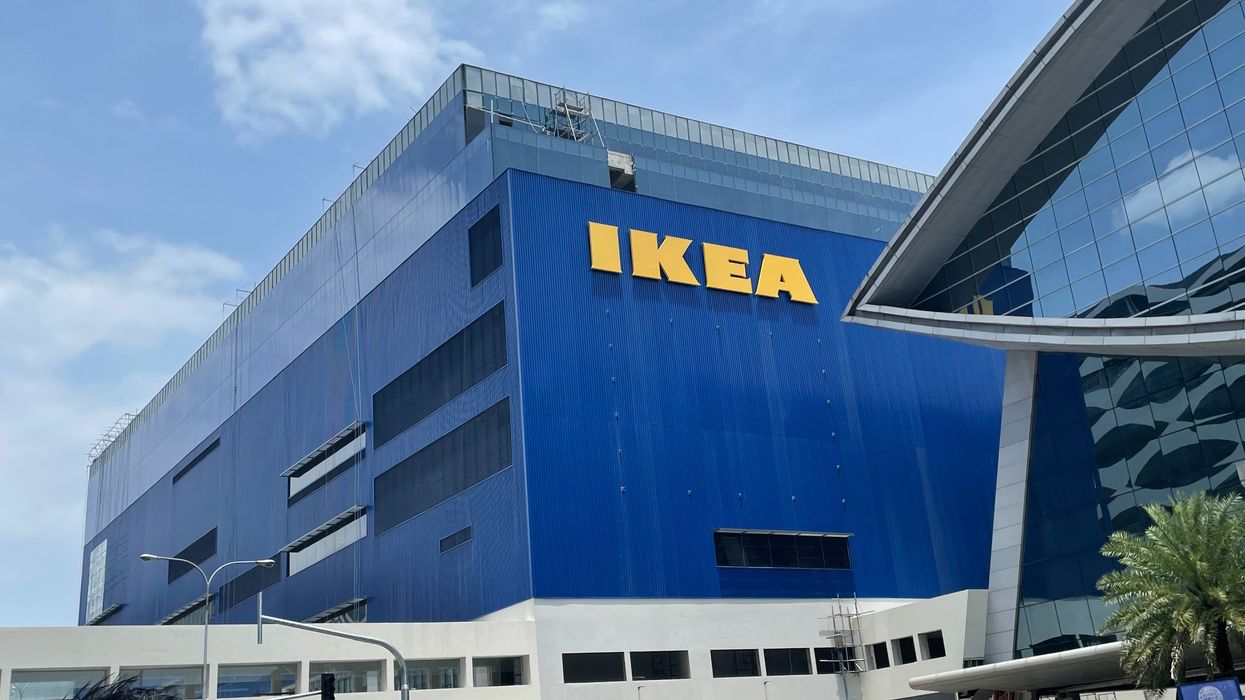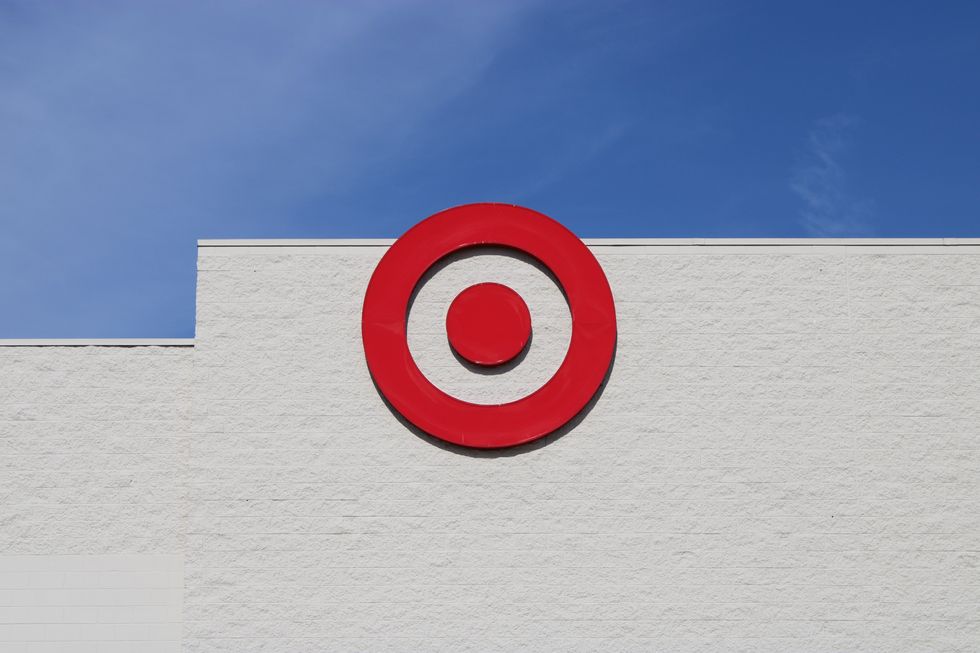Shopper Experience
20 April 2023
Ikea's $2.2B US store expansion isn't just about in-person shopping
Big box retailers are realizing the omnichannel dream.

Photo by Ruel Del Jamorol on Unsplash
Big box retailers are realizing the omnichannel dream.

Ikea is making an investment in ecommerce by building more stores.
To those who view physical and digital retail as a binary choice, this may sound like a doomed strategy. But, in fact, it reflects how the pandemic accelerated omnichannel retail rather than ecommerce on its own, and the fact that big box stores are in a prime position to capitalize on this shift.
On Thursday, Ikea owner The Ingka Group made a splash with an announcement that it will invest $2.2 billion in a U.S. expansion over the next three years. This will include the addition of eight new stores, as well as nine smaller plan-and-order points. Given how a trip to an Ikea store remains one of our most unique retail experiences and capable of generating excitement with just a mention of the word “meatballs,” these openings are the part of the news making the headlines.
After a year that saw a resurgence of in-store shopping following two years of pandemic-prompted lockdowns, this could be viewed as confirmation that, despite the 2020 predictions, in-store shopping isn’t going away. In-person retail outgrew ecommerce in 2022, and Ikea's move seems to bring further confirmation that retailers are once again prioritizing brick-and-mortar stores. In fact, the Ikea investment sounds like an old-fashioned economic development win. It will be a big real estate investment, create 2,000 jobs and bring a household name to new towns, primarily in the South. For local officials who have been talking about growing a community of tiny startups and making their city attractive to remote workers and Amazon warehouses, such scale and physicality is likely a balm.
But look closer at the home and furniture retailer’s plans, and it’s evident that the Swedish company is also in fact making investments in an increasingly digital future. As cool as Ikea stores are, Ingka isn’t only going to build more of the same shopping destinations we’ve always seen. Ikea is planning to direct these funds into not only the store footprint, but also fulfillment. It’s not only about physical retail, but omnichannel.
This latest investment in the US will also further modernize existing stores so that they have a dual role – to offer inspiration and home furnishing expertise while also increasing their handling capacity for parcel deliveries directly from the store. The company will continue to build more effective replenishment and fulfillment capabilities while transforming last mile deliveries to ensure faster, more sustainable, and more affordable deliveries.
Translation: These stores are going to serve both in-store shopping and ecommerce orders, under one roof.
It shows that the store has a big role to play in digital commerce. It is a pickup point, fulfillment center and hub for delivery, all while still welcoming customers – many of whom are probably entering the store after doing online research or checking whether an item is in-stock – to shop.
The store as fulfillment center model is emerging as the engine of ecommerce growth for big box stores. Ikea is the latest to embrace it.
The shift in the role of the store that's evident in Ikea's plans dates to pre-pandemic times. Target positioned stores at the center of its ecommerce strategy in the mid-2010s, making a bet that it already held real estate that was both large enough to accommodate repurposing for digital orders, and situated in close proximity to many of its customers.
At the time, the "stores as hubs" strategy seemed like a radical step. Ecommerce was seen as an entirely separate operation from brick-and-mortar retail. But Target's approach doubled down on what it already had, rather than building a new fulfillment network or acquiring digital-first brands.
By 2017, early results were positive. Then, the pandemic brought a big payoff. With the shift to online ordering, curbside and in-store pickup became priority areas for retailers, and those who could advance these capabilities quickly could win.
Target had a strategy in place that put stores at the focal point of these digitally-inclined services, and so it was well-positioned to capitalize. By 2021, Target was heralded as retail’s big winner of the pandemic. When it comes to omnichannel expansion, the company hasn’t looked back. Major initiatives of the last two years include an investment to remodel 200 stores to expand pickup and fulfillment, and a $100 million investment to build out local sortation centers that triage orders between the store and a delivery destination. Through it all, the big box remains the center of operations, as 95% orders are fulfilled by stores, CEO Brian Cornell recently said.
Look at other major retailers, and their strategies are now similar. Walmart has long boasted that its network of stores puts it within 10 miles of 90% of the U.S. population. As it continues to expand ecommerce after a strategy shift during the pandemic, it is embracing an omnichannel approach that will eventually see fulfillment centers attached to stores. Similar to Ikea’s plans, Costco made a $4 billion investment that combined store openings and logistics in 2022.
The pandemic boom ushered in an ecommerce build, and it isn't slowing down.
 Photo by Daniel ODonnell on Unsplash
Photo by Daniel ODonnell on UnsplashThese moves by retailers are strong indicators of the pandemic ecommerce boom’s lasting legacy. As the lockdowns move into the rearview, it’s important to take the right lesson from this chaotic time. Last year, many watched as ecommerce sales growth returned to pre-pandemic levels, and the stock prices of industry leaders like Amazon and Shopify plummeted. This was interpreted to mean that the great ecommerce pull-forward of 2020 and 2021 was overhyped, and didn’t come to pass.
But as the dust is settling further, it’s becoming clear that there was in fact a pull-forward during those years. It just wasn’t concentrated to ecommerce sales on their own. Rather, what accelerated during those dizzying years was the blurring of the line between ecommerce and physical retail.
With the overnight shift to online shopping, retailers built out capabilities to be able to serve customers across multiple sales channels, and many different fulfillment methods. When stores reopened, what was built during the pandemic didn’t just go back in the box, and customers didn’t stop seeking out the convenience of features that enabled them to search whether an item was in stock, or buy online and pick up at a store. Now, retailers, are in a position to choose to double down on strategies that they embraced out of necessity.
For Ikea, expansion at this time makes particular sense. Ecommerce sales grew 73% in 2021 at the retailer amid the pandemic boom. Over the last two years, digital-first home marketplaces like Wayfair was among those that saw fortunes reverse with reopening, and big box rivals like Walmart saw less discretionary spend amid inflation. Last year, Ikea announced plans to invest $3 billion in a bid to turn stores into delivery hubs across the U.S. and Europe. The latest U.S. expansion will see new stores that have the "dual role" come online.
The home retailer offers Exhibit A that the omnichannel future that long seemed like a dream is suddenly a reality. Rather than deprioritizing omnichannel capabilities, retailers are investing in a major expansion of stores that embed ecommerce into their operations. They are in part motivated by the potential to realize new profit from high-margin digital businesses like retail media, as well as lean into internet-based marketing and retention tools to build loyalty programs that drive up average order values across channels. The result will be an expanded network that stretches a retailer’s geographic reach. This brings just as many advantages in physical retail as it does ecommerce, the latter of which favors networks that can “accurately distribute inventory close to demand,” as LPF Spend Management’s Nake Skiver put it.
The shift taking place at big box stores changes the competitive landscape in retail. For years, Amazon took more and more share in retail and built a bigger lead in ecommerce. This left other retailers playing catch up, and Amazon dictating more of the terms of engagement as it built out its own fulfillment network, rose to dominate categories like electronics and signed up more customers for the shopping machine that is Prime. But now that the big box retailers have worked through their experimentation periods and leveled up their digital capabilities, they can build a playing field on which they can make their own rules.
This market is not determined by a battle between ecommerce and retail, or even the ability to immediately build an ecommerce operation that is directly competitive with Amazon. Given the exorbitant cost of building a fulfillment network, it’s unlikely the latter would be sustainable, even for the massive businesses under consideration here. Rather, retailers can build from the place where their strengths already lie: The store. From this starting point, they are still in position to realize some of the upside of Amazon's model, without having to build a new operational structure. The store-based approach doesn't close off options such as standing up a marketplace or turning a logistics network into a revenue-generating business of its own. Rather, as Walmart's recent plans show, it only makes them more attainable. Plus, it's an area where Amazon has yet to crack the code, despite experiments in grocery and apparel.
For all the talk about ecommerce growth, it's worth remembering that, at the end of the day, brick-and-mortar is still the dominant player in retail. As Amazon CEO Andy Jassy himself pointed out in the company’s annual shareholder letter, about 80% of global retail takes place in physical stores. As retailers use the tools of digital commerce to reach shoppers and create experiences that are tailored to their needs, they need not cede that built-in advantage.
Now, the question is how a true omnichannel store will reshape the shopping experience. Given Ikea’s track record of innovation in the path through its brick-and-mortar store, look for those eight new stores to look different than what's come before.
On the Move has the latest from Amazon, Lovesac and more.
Ryan Cohen is executive chairman of GameStop. (Photo by Flickr user Bill Jerome, used under a Creative Commons) license.
This week, leadership is changing at GameStop, Sorel and Beautycounter. Meanwhile, key executives are departing at Amazon, Wayfair and Lovesac.
Here’s a look at the latest shuffles:
GameStop announced the termination of Matthew Furlong as CEO on Wednesday. A brief statement did not provide a reason for the firing.
With the move, Chewy founder and activist investor Ryan Cohen was named executive chairman of the video game retailer. Cohen will be responsible for capital allocation and overseeing management.
It came as the company reported a 10% year-over-year decline in net sales for the first quarter. Meanwhile, the company’s net loss improved by 62%.
In an SEC filing, GameStop further added this “We believe the combination of these efforts to stabilize and optimize our core business and achieve sustained profitability while also focusing on capital allocation under Mr. Cohen’s leadership will further unlock long-term value creation for our stockholders.”
Cohen was revealed as GameStop's largest shareholder when he disclosed a 10% stake in the retailer in 2020. GameStop went on to become a leading name in the meme stock rise of 2021.
Mark Nenow is stepping down as president of the Sorel brand in order to focus on his health.
After rising to the role in 2015, Nenow spearheaded a transformation of Columbia Sportswear-owned Sorel from a men’s workwear brand to a fashion-focused brand that led with a women’s offering of boots, sandals and sneakers.
“Mark led the brand to sales of $347 million in net sales in 2022,” said Columbia Sportswear CEO Tim Boyle, in a statement. “His leadership has been invaluable to this company, and we wish him the very best.”
Columbia will conduct a search for Nenow’s replacement. Craig Zanon, the company’s SVP of emerging brands, will lead Sorel in the interim.
Beautycounter appointed board member Mindy Mackenzie as interim CEO, succeeding Marc Rey. According to the brand, Rey and the board “mutually decided to transition to a new phase of leadership for Beautycounter.”
McKenzie, a former executive at Carlyle, McKinsey and Jim Beam, will lead the company as it conducts a search for a permanent CEO. Additionally, former Natura & Co CEO Roberto Marques will join Beautycounter’s board as chair.
As part of the transition, Nicole Malozi is also joining the company as chief financial officer. She brings experience from Tatcha, Nike, and DFS Group Limited.
Melissa Nick, a VP of customer fulfillment for North America at Amazon, will leave the company, effective June 16, CNBC reported. Nick joined the company in 2014, and oversaw a region that included nearly 300 fulfillment centers. After doubling its supply chain footprint during the pandemic, Amazon recently reorganized its fulfillment operations to take a regional approach, as opposed to a national model that often resulted in items shipping across the country.

Jon Blotner (Courtesy photo)
Steve Oblak will retire from the role of chief commercial officer at home goods marketplace Wayfair. With the move, Jon Blotner will be promoted to chief commercial officer.
"Steve has served as a critical part of our leadership team and played a pivotal role in Wayfair's growth, helping us grow from a $250 million business when he joined to $12 billion in net revenue today,” said Wayfair CEO Niraj Shah, in a statement. “He oversaw countless milestones, from helping to launch the Wayfair brand as we brought together hundreds of sites into a single platform, to launching new categories, business lines, and geographies while overseeing our North American and European businesses, to leading our debut into physical retail.”
Blotner previously oversaw exclusive and specialty retail brands, as well as digital media at Wayfair. Before joining the company, he served as president of Gemvara.com prior to its 2016 acquisition by Berkshire Hathaway.
Furniture retailer Lovesac said Donna Dellomo will retire as EVP and CFO, and move to an advisory role, effective June 30. Dellomo was with Lovesac for six years.
Keith Siegner was appointed as the next EVP and CFO. He brings experience as CFO of esports company Vindex, as well as executive roles at Yum! Brands, UBS Securities and Credit Suisse.
Additionally, Jack Krause will retire from the role of chief strategy officer, effective June 30. His responsibilities will be divided between CEO Shawn Nelson and president Mary Fox.
“Since joining Lovesac, Jack has played an instrumental role in transforming the Company into a true omni channel retailer by helping expand our physical touchpoints and digital platform as we continue to disrupt the industry,” said Nelson, in a statement.
The National Retail Federation announced the addition of five new board members. They include: